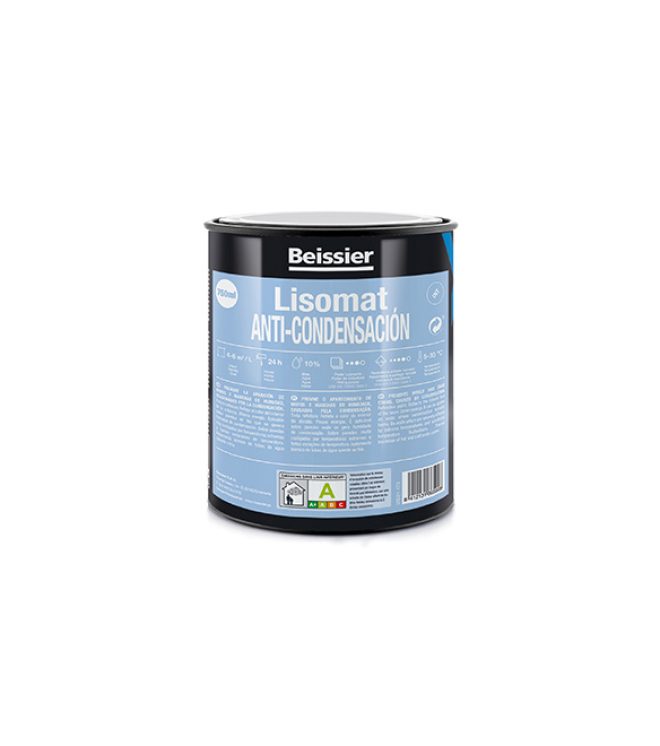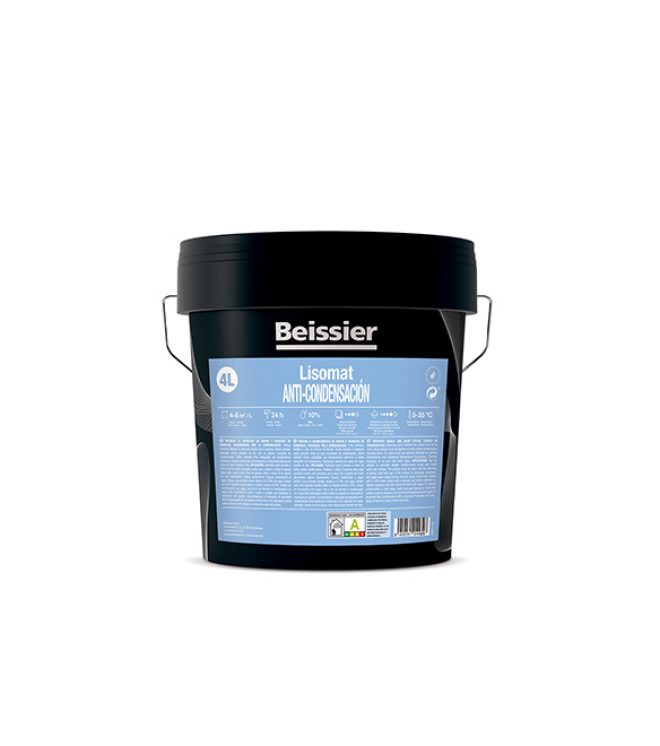



Reflective paint with thermal insulation properties, improves energy savings, thermal comfort and reduces condensation
It avoids the cold wall phenomenon, preventing the appearance of moisture stains and mold thanks to its thermal insulation and anti-condensation properties.


Reflective paint with thermal insulation properties, improves energy savings, thermal comfort and reduces condensation
It avoids the cold wall phenomenon, preventing the appearance of moisture stains and mold thanks to its thermal insulation and anti-condensation properties.


0,75L – 4,0L
The reflective paint with thermal insulation properties Lisomat Anticondensacion reduces the flow of heat outwards, improving thermal comfort and energy saving. It is applied to many different substrates such as: plaster, plasterboard, cement, fiber cement, brick, cement boards and plastic paints.


The reflective paint with thermal insulation properties Lisomat Anticondensacion creates a layer of paint that the surfaces it is applied to avoid the cold wall phenomenon, preventing the appearance of moisture stains and mold thanks to its thermal insulation and anti-condensation properties. It is based on low-conductivity microspheres that give it insulating and anti-condensation properties. It is permeable to water vapor and reinforced with encapsulated systems to protect the membrane from the growth of mold and fungi.
Preparation
Application
2024 Ιnterkas All Rights Reserved | Terms & Conditions